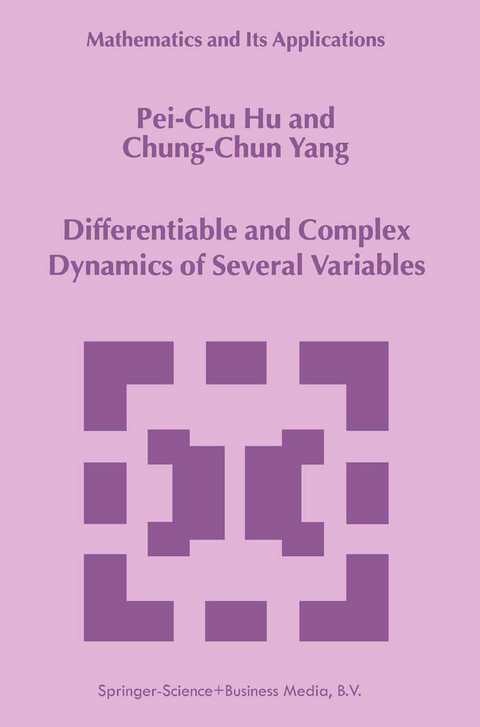
Differentiable and Complex Dynamics of Several Variables
Seiten
1999
Springer (Verlag)
978-0-7923-5771-1 (ISBN)
Springer (Verlag)
978-0-7923-5771-1 (ISBN)
Presents a comprehensive survey on dynamics and related topics, such as Fatou-Julia type theory, the Ergodic theorem and invariant sets, hyperbolicity in differentiable or complex dynamics, iterant ion theory on Pm, complex dynamics in Cm and the foundations of differentiable and complex dynamics.
The development of dynamics theory began with the work of Isaac Newton. In his theory the most basic law of classical mechanics is f = ma, which describes the motion n in IR. of a point of mass m under the action of a force f by giving the acceleration a. If n the position of the point is taken to be a point x E IR. , and if the force f is supposed to be a function of x only, Newton's Law is a description in terms of a second-order ordinary differential equation: J2x m dt = f(x). 2 It makes sense to reduce the equations to first order by defining the velo city as an extra n independent variable by v = :i; = ~~ E IR. . Then x = v, mv = f(x). L. Euler, J. L. Lagrange and others studied mechanics by means of an analytical method called analytical dynamics. Whenever the force f is represented by a gradient vector field f = - /lU of the potential energy U, and denotes the difference of the kinetic energy and the potential energy by 1 L(x,v) = 2'm(v,v) - U(x), the Newton equation of motion is reduced to the Euler-Lagrange equation ~~ are used as the variables, the Euler-Lagrange equation can be If the momenta y written as . 8L y= 8x' Further, W. R.
The development of dynamics theory began with the work of Isaac Newton. In his theory the most basic law of classical mechanics is f = ma, which describes the motion n in IR. of a point of mass m under the action of a force f by giving the acceleration a. If n the position of the point is taken to be a point x E IR. , and if the force f is supposed to be a function of x only, Newton's Law is a description in terms of a second-order ordinary differential equation: J2x m dt = f(x). 2 It makes sense to reduce the equations to first order by defining the velo city as an extra n independent variable by v = :i; = ~~ E IR. . Then x = v, mv = f(x). L. Euler, J. L. Lagrange and others studied mechanics by means of an analytical method called analytical dynamics. Whenever the force f is represented by a gradient vector field f = - /lU of the potential energy U, and denotes the difference of the kinetic energy and the potential energy by 1 L(x,v) = 2'm(v,v) - U(x), the Newton equation of motion is reduced to the Euler-Lagrange equation ~~ are used as the variables, the Euler-Lagrange equation can be If the momenta y written as . 8L y= 8x' Further, W. R.
1 Fatou-Julia type theory.- 2 Ergodic theorems and invariant sets.- 3 Hyperbolicity in differentiable dynamics.- 4 Some topics in dynamics.- 5 Hyperbolicity in complex dynamics.- 6 Iteration theory on ?m.- 7 Complex dynamics in ?m.- A Foundations of differentiable dynamics.- B Foundations of complex dynamics.
| Erscheint lt. Verlag | 31.7.1999 |
|---|---|
| Reihe/Serie | Mathematics and Its Applications ; 483 | Mathematics and Its Applications ; 483 |
| Zusatzinfo | X, 342 p. |
| Verlagsort | Dordrecht |
| Sprache | englisch |
| Maße | 155 x 235 mm |
| Themenwelt | Mathematik / Informatik ► Mathematik ► Analysis |
| Mathematik / Informatik ► Mathematik ► Geometrie / Topologie | |
| ISBN-10 | 0-7923-5771-X / 079235771X |
| ISBN-13 | 978-0-7923-5771-1 / 9780792357711 |
| Zustand | Neuware |
| Haben Sie eine Frage zum Produkt? |
Mehr entdecken
aus dem Bereich
aus dem Bereich
Buch | Softcover (2024)
De Gruyter Oldenbourg (Verlag)
CHF 83,90


